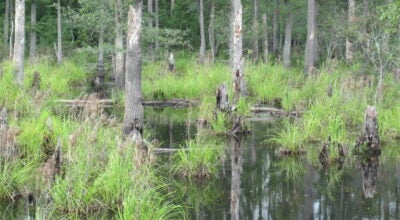Eagle takes flight
Published 8:24 pm Friday, December 26, 2008
To the claps and cheers of more than 50 witnesses, a young bald eagle took flight Friday afternoon above the fields of Westover Plantation.
It’s a far cry from the bird’s abilities not even two short weeks ago.
On Dec. 15, the less than one-year-old bald eagle was caught at the Suffolk Island Landfill, located on Route 58.
The bird made a common mistake for young eagles, and went to find food at the landfill as opposed to hunting for live food.
“There’s ample opportunity to eat, but nothing good to eat,” said Ed Clark, president of the Wildlife Center – a nonprofit organization aimed at to restore wild animals health and return them to the wild.
“Essentially, he got food poisoning.”
According to reports, the bird had fallen so ill that his could not fly, stand or even lift his head. When approached by worried onlookers, the bird did not resist being handled – another sign something is wrong.
The bird was taken to the Midway Veterinary Hospital in Chesapeake, and was then sent to the Wildlife Center in Waynesboro. For two days, staff members tested, observed and treated the sickly eagle before deciding he was getting strong enough for release.
This eagle was the 25th eagle admitted to the Center, and his release marked a success for many in the wildlife preservation community.
On Friday, observers from across the region – and even as far away as Pennsylvania – traveled to the Charles City County plantation to watch the eagle take its first flight back in the wild.
The plantation is located right next to the James River, which Clark told the crowd made the location perfect to release the eagle.
The river is very shallow, very wide and has a high fish population, which is perfect for the hunting of a younger bird. Plus, across the James River is the National Wildlife Refuge, which garners the highest eagle population in the East Coast. Clark said that the older birds in the population will help teach the younger birds.
“Particularly for young birds, they need a lot of mentoring,” Clark said.
The bird was driven down from Waynesboro, and had to have a few minutes of care to remove the bumpers that had been put on its wings.
The bumpers were bandages that were put on the wings for the ride only in case of emergencies. The bumpers would protect the wings from the gates in his cage.
After the bumpers were removed and the bird checked, he was released in one of the plantation’s open fields.
Additional information about the Wildlife Center is available at www.wildlifecenter.org and additional information about Westover Plantation is available at www.jamesriverplantations.org/Westover.html.






